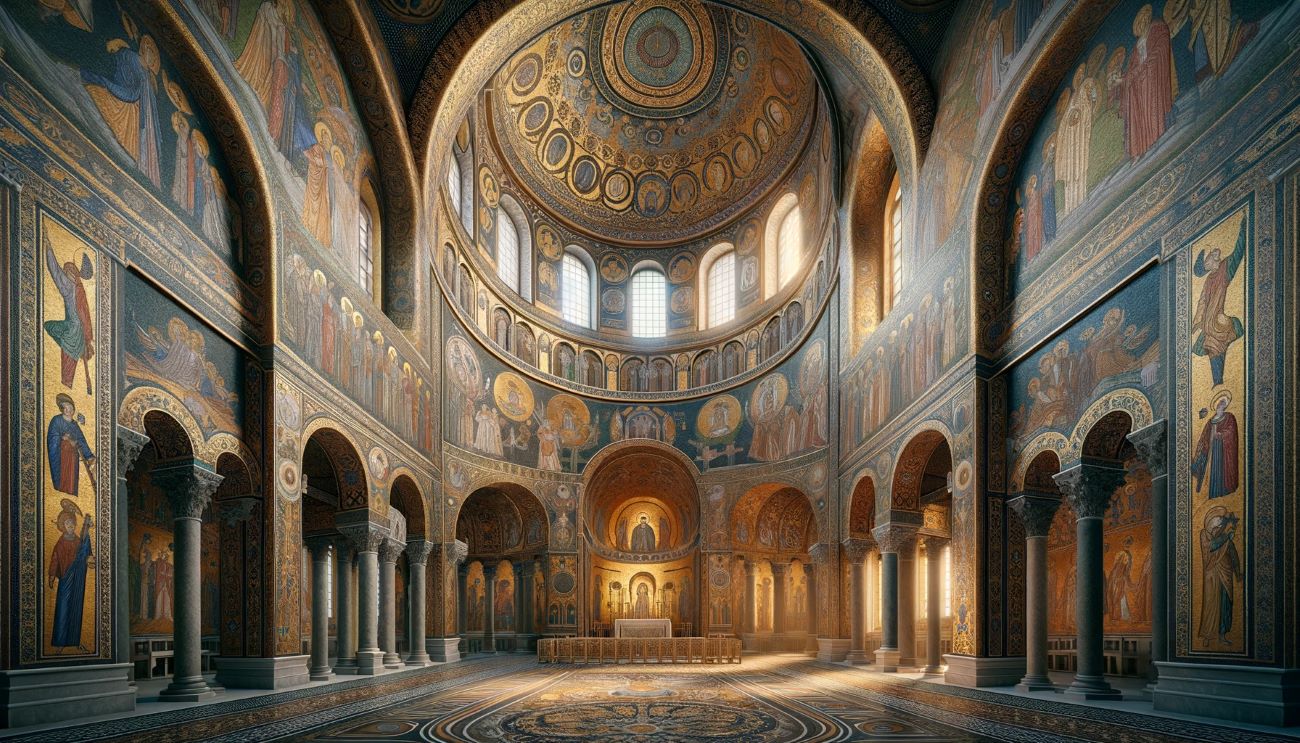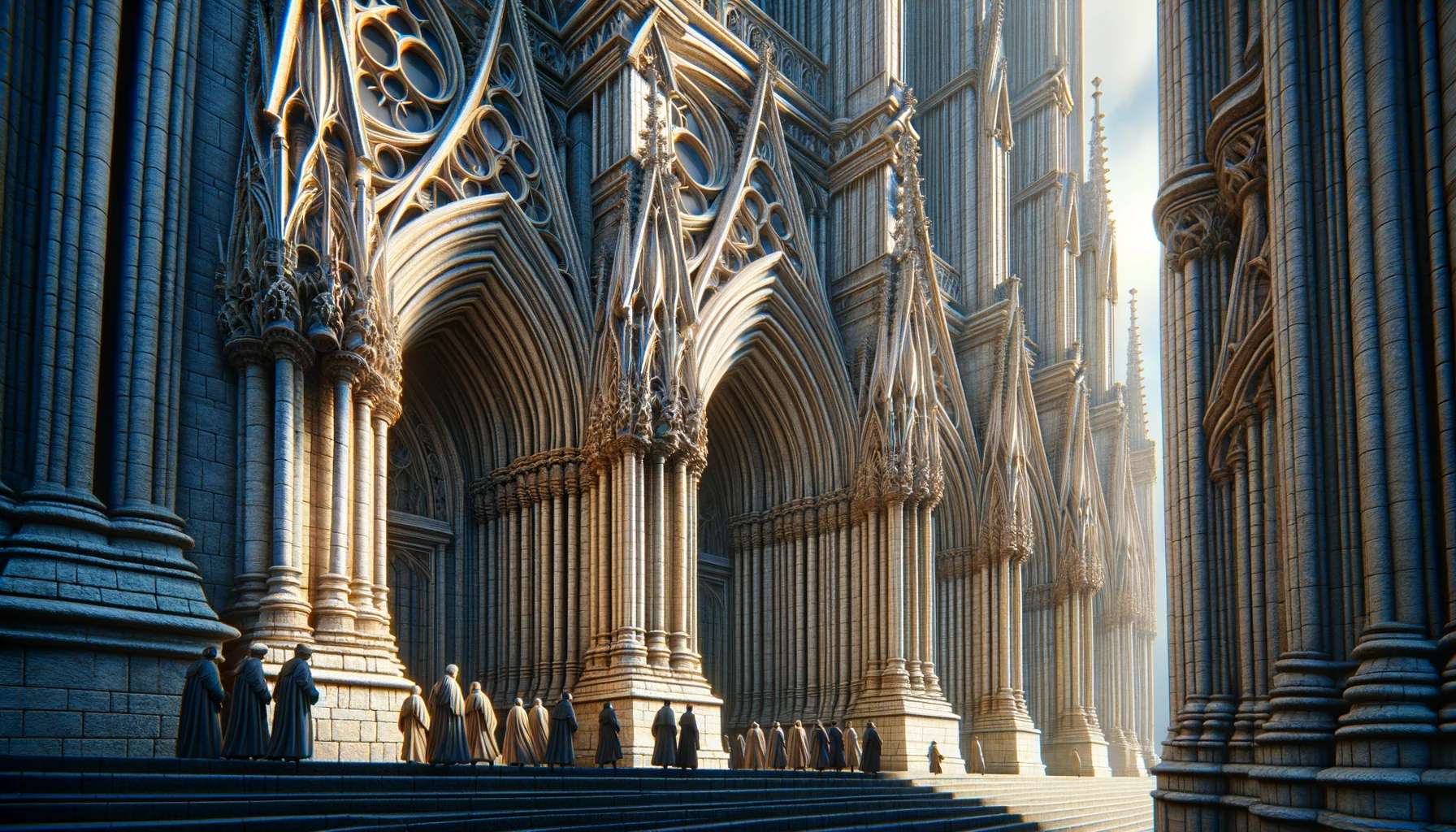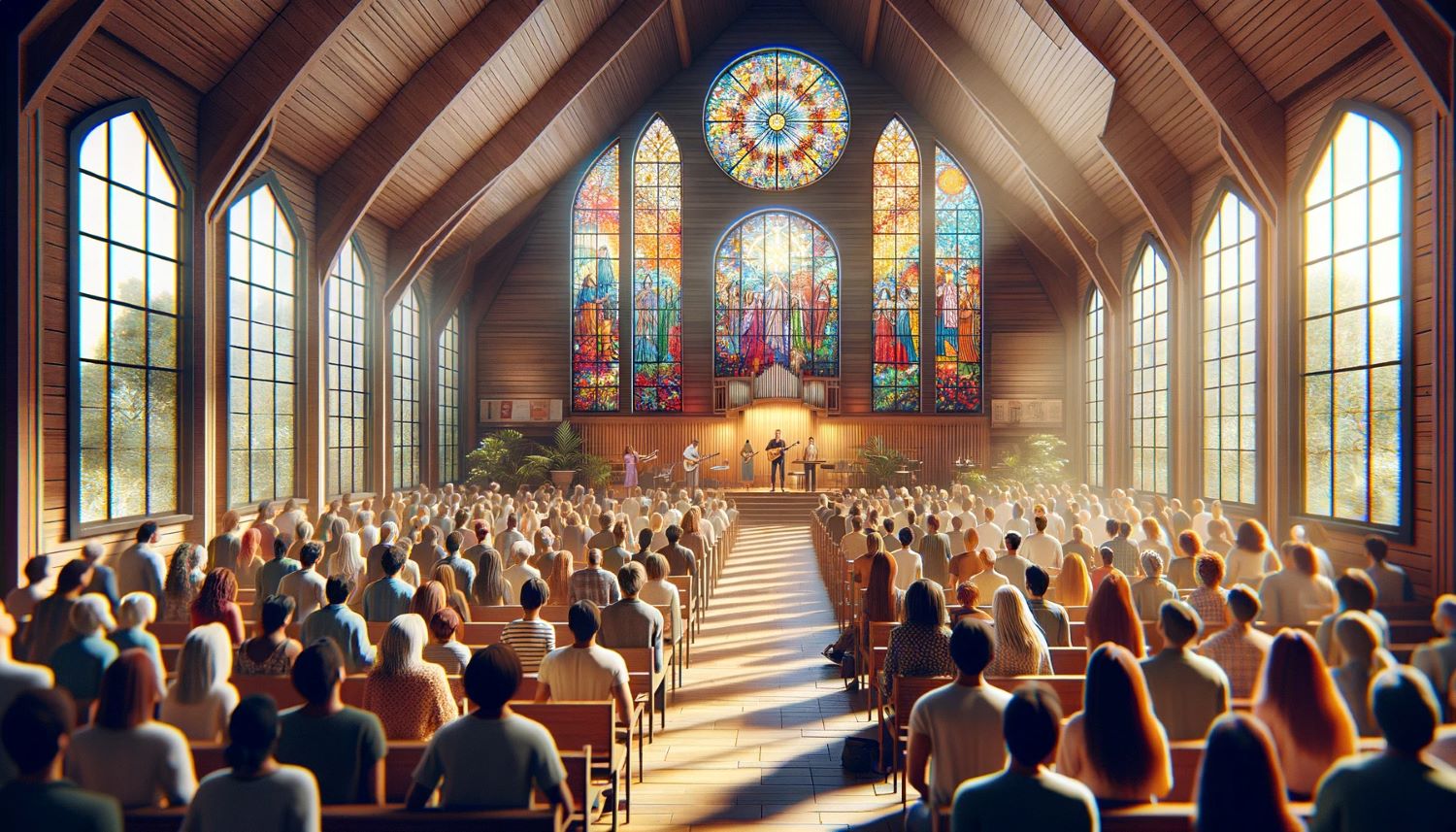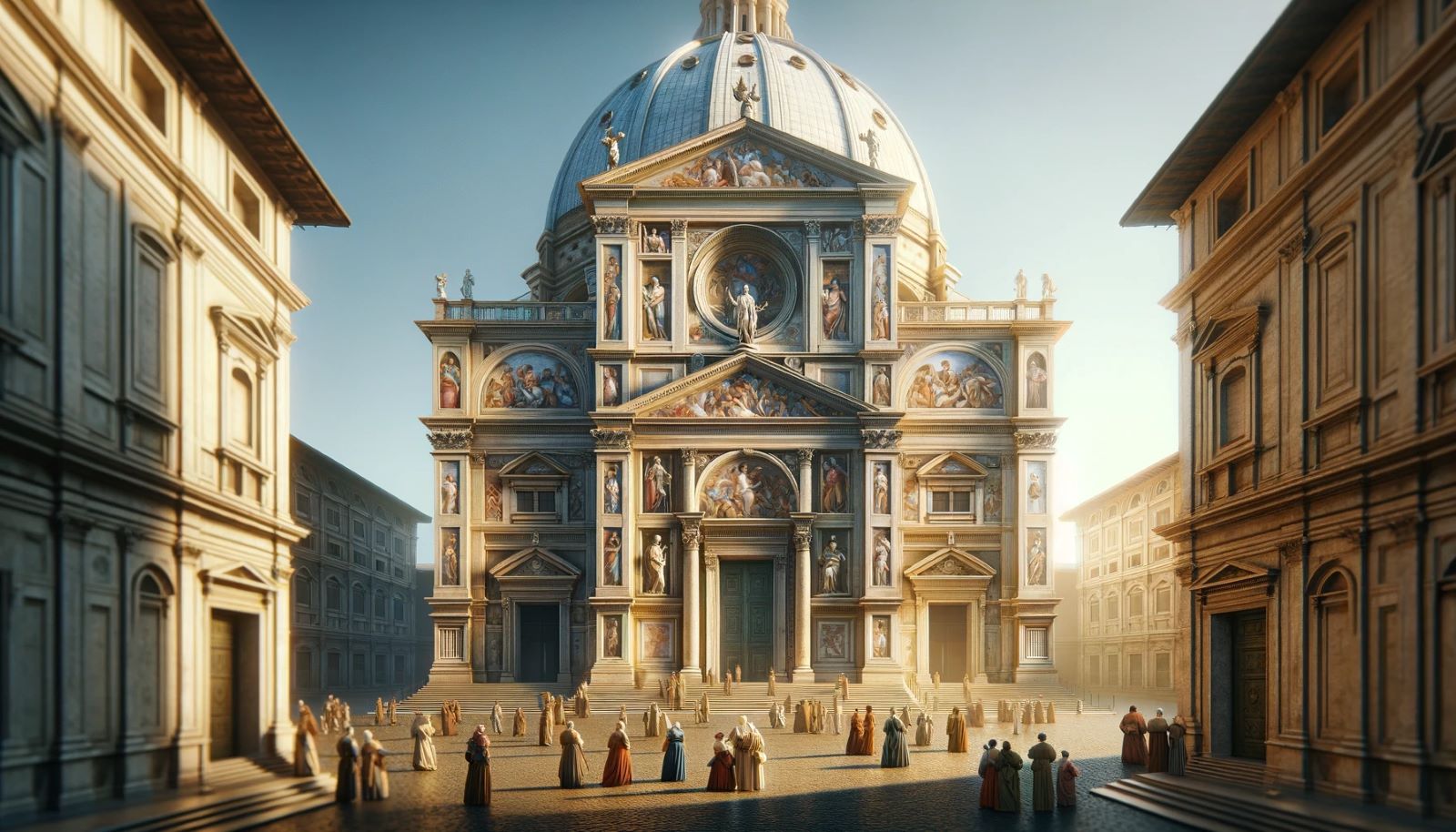Home>Arts and Culture>What Distinguished Charlemagne’s Palace Chapel At Aachen From Earlier Christian Structures?


Arts and Culture
What Distinguished Charlemagne’s Palace Chapel At Aachen From Earlier Christian Structures?
Published: March 4, 2024
Jason DeRose, Managing Editor at Christian.net, uses his expertise in religion and journalism to deepen understanding of faith's societal impacts. His editorial leadership, coupled with a strong academic background, enriches the platform’s diverse content, earning him recognition in both journalism and religious circles.
Discover the architectural innovations that set Charlemagne's Palace Chapel at Aachen apart from earlier Christian structures. Explore the unique features that defined this iconic symbol of arts and culture.
(Many of the links in this article redirect to a specific reviewed product. Your purchase of these products through affiliate links helps to generate commission for Christian.net, at no extra cost. Learn more)
Table of Contents
The Architectural Design of Charlemagne's Palace Chapel
The architectural design of Charlemagne's Palace Chapel at Aachen was a remarkable departure from earlier Christian structures. The chapel, also known as the Palatine Chapel, was a central part of Charlemagne's vision to establish Aachen as the cultural and political center of his empire. The chapel's design was influenced by a combination of Roman, Byzantine, and Germanic architectural elements, resulting in a unique and innovative structure that set it apart from its predecessors.
-
Centralized Plan: Unlike earlier basilica-style churches, Charlemagne's architects opted for a centralized plan for the chapel. The central octagonal core, inspired by Byzantine architecture, was a departure from the long, rectangular layout of traditional basilicas. This design choice created a sense of unity and harmony within the space, allowing worshippers to feel connected to the central altar from all sides.
-
Octagonal Atrium: Surrounding the central octagon was an octagonal atrium, creating a transition space between the exterior and the main chapel. This feature, reminiscent of Roman mausoleums and Byzantine churches, served as a ceremonial entryway for the emperor and his court. The atrium's design emphasized the importance of processional movement and ritual within the architectural layout.
-
Innovative Dome: The chapel's central octagon was crowned by an impressive dome, a feature that drew inspiration from both Roman and Byzantine architectural traditions. The dome's design showcased Charlemagne's ambition to rival the grandeur of ancient Roman structures while incorporating the symbolic significance of domes in Byzantine churches. The use of the dome in the chapel's design symbolized the heavenly realm and the divine authority of the emperor.
-
Integration of Light: The architects of Aachen Chapel skillfully integrated light into the design, utilizing clerestory windows and an open gallery to illuminate the interior. This deliberate use of light not only created a sense of awe and reverence but also emphasized the spiritual significance of the space. The interplay of light and shadow within the chapel contributed to its mystical and transcendent atmosphere.
-
Imperial Symbolism: The architectural design of the chapel was laden with imperial symbolism, reflecting Charlemagne's desire to establish Aachen as the "New Rome." The incorporation of classical elements, such as columns and arches, alongside Byzantine motifs, served as a visual representation of Charlemagne's authority and his aspiration to revive the glory of the Roman Empire.
In essence, the architectural design of Charlemagne's Palace Chapel at Aachen was a testament to the emperor's vision of creating a monumental structure that transcended the architectural norms of its time. By blending elements from diverse architectural traditions, the chapel stood as a symbol of Charlemagne's imperial power and his ambition to unite the spiritual and political realms within a single awe-inspiring edifice.
Read more: What Is A Memorial Chapel
The Influence of Byzantine and Roman Architecture on Aachen Chapel
The architectural design of Charlemagne's Palace Chapel at Aachen was profoundly influenced by both Byzantine and Roman architectural traditions, resulting in a structure that reflected the synthesis of these two influential styles. The Byzantine influence on the Aachen Chapel was particularly evident in the choice of a centralized plan, characterized by the octagonal core and the emphasis on a harmonious, centralized space. This departure from the traditional basilica layout, commonly associated with Roman architecture, showcased the impact of Byzantine architectural principles on the chapel's design. Additionally, the use of the dome as a crowning feature, a hallmark of Byzantine churches, further underscored the influence of Byzantine architectural elements on the Aachen Chapel.
On the other hand, the Roman architectural influence on the Aachen Chapel was manifested in the incorporation of classical elements such as columns, arches, and decorative motifs. These elements, reminiscent of Roman architectural grandeur, served as a visual homage to the classical heritage of the Roman Empire. The integration of Roman architectural features within the chapel's design not only paid tribute to the legacy of ancient Rome but also conveyed Charlemagne's aspiration to position Aachen as a successor to the grandeur of the Roman Empire.
Moreover, the Aachen Chapel's octagonal atrium, which served as a ceremonial entryway, bore resemblance to the architectural layout of Roman mausoleums, while the deliberate use of light and the interplay of light and shadow within the chapel echoed the mastery of light found in Roman and Byzantine structures. This intentional integration of light not only created a sense of awe and reverence but also emphasized the spiritual significance of the space, drawing from the architectural practices of both Byzantine and Roman traditions.
In essence, the Aachen Chapel stood as a testament to the enduring influence of Byzantine and Roman architectural traditions on Charlemagne's vision for a monumental and spiritually significant structure. The fusion of these two influential styles resulted in a unique and innovative architectural masterpiece that transcended the boundaries of its time, reflecting the cultural and political aspirations of Charlemagne's empire.
The Use of Materials and Construction Techniques in Aachen Chapel
The construction of Aachen Chapel involved the meticulous use of materials and innovative techniques that contributed to the structural integrity and symbolic significance of the edifice. The architects and craftsmen employed a combination of materials, including stone, marble, and mosaic, to adorn the interior and exterior of the chapel. The extensive use of marble, sourced from various regions of the Carolingian Empire, reflected the opulence and grandeur associated with imperial patronage. The intricate mosaic work, featuring biblical narratives and ornate designs, added a layer of spiritual and artistic richness to the chapel's interior, serving as a visual testament to the devotion and cultural sophistication of the Carolingian court.
In addition to the careful selection of materials, the construction techniques employed in the building of Aachen Chapel were groundbreaking for their time. The architects utilized a system of alternating layers of stone and brick, known as opus mixtum, to reinforce the structural stability of the chapel. This innovative technique allowed for the creation of sturdy walls capable of supporting the weight of the dome and the upper levels of the structure. Furthermore, the use of vaulting and arches, inspired by Roman engineering principles, facilitated the distribution of weight and provided architectural elegance to the interior spaces.
The construction of the chapel also involved the utilization of advanced engineering methods to achieve the desired architectural vision. The erection of the central dome, a feat of engineering prowess, required the careful arrangement of stone blocks to form a self-supporting structure. The mastery of vaulting techniques, combined with the strategic placement of load-bearing columns, enabled the architects to create a sense of spaciousness and verticality within the chapel, elevating the spiritual experience of worshippers.
Moreover, the incorporation of bronze doors, adorned with intricate relief sculptures, exemplified the fusion of artistic craftsmanship and architectural functionality. These ornate doors, cast using the lost-wax technique, served as a testament to the skilled metalworking traditions of the Carolingian era, while also symbolizing the threshold between the earthly realm and the sacred space within the chapel.
In essence, the use of materials and construction techniques in Aachen Chapel exemplified the ingenuity and artistry of the Carolingian architects and craftsmen. The careful selection of materials, coupled with innovative construction methods, resulted in a monumental structure that not only stood as a testament to imperial power but also embodied the cultural and technological achievements of the Carolingian Renaissance.
The Symbolism and Iconography of Aachen Chapel
The symbolism and iconography of Aachen Chapel encompassed a rich tapestry of religious, political, and cultural significance, reflecting the multifaceted intentions behind its design and decoration. The interior and exterior of the chapel were adorned with a diverse array of symbols and images, each carrying layers of meaning that contributed to the overarching narrative of the Carolingian Empire and its relationship with Christianity.
-
Imperial Authority: The iconography within Aachen Chapel prominently featured motifs that underscored the imperial authority of Charlemagne and his successors. The incorporation of classical architectural elements, such as columns and arches, served as visual reminders of the continuity between the Carolingian Empire and the grandeur of ancient Rome. Additionally, the presence of imperial insignia and regal imagery, including the depiction of Charlemagne as a triumphant ruler, communicated the divine right of the emperor to rule over both the earthly and spiritual realms.
-
Biblical Narrative: The iconographic program of the chapel encompassed a comprehensive portrayal of biblical narratives and Christian symbolism. The intricate mosaic work and frescoes depicted scenes from the Old and New Testaments, emphasizing the divine foundations of the Carolingian rule and the sacred nature of the empire. The inclusion of biblical figures, saints, and angels within the decorative scheme reinforced the spiritual authority of the Carolingian dynasty and its alignment with Christian virtues.
-
Ecclesiastical Power: The iconography of Aachen Chapel also conveyed the close relationship between the Carolingian rulers and the Church. The representation of ecclesiastical dignitaries, such as bishops and popes, alongside imperial figures, served to emphasize the symbiotic bond between the secular and religious authorities. Furthermore, the imagery of the chapel's dedication to the Virgin Mary and the relics of saints underscored the chapel's role as a sacred site of pilgrimage and veneration.
-
Cosmic Symbolism: The architectural and decorative elements of Aachen Chapel were imbued with cosmic symbolism, reflecting the medieval understanding of the universe and the divine order. The central dome, with its celestial motifs and depiction of the heavens, symbolized the cosmic hierarchy and the connection between the earthly realm and the divine sphere. The use of light and color within the chapel's interior further accentuated the transcendent and otherworldly nature of the space, inviting worshippers to contemplate the mysteries of the cosmos.
-
Cultural Synthesis: The iconography of Aachen Chapel represented a synthesis of diverse cultural influences, reflecting the Carolingian Empire's role as a center of artistic and intellectual exchange. The fusion of Roman, Byzantine, and Germanic artistic traditions within the chapel's iconographic program exemplified the empire's aspiration to create a cultural legacy that transcended regional boundaries and united diverse artistic styles under the banner of Carolingian patronage.
In essence, the symbolism and iconography of Aachen Chapel served as a visual manifesto of the Carolingian Empire's aspirations, blending imperial authority, religious piety, cosmic symbolism, and cultural synthesis into a monumental artistic and architectural achievement. The intricate interplay of symbols and images within the chapel's design conveyed a narrative of power, faith, and cultural innovation, solidifying the chapel's status as a testament to the enduring legacy of Charlemagne and his vision for a new Rome.
The Historical and Cultural Significance of Aachen Chapel
The Aachen Chapel holds profound historical and cultural significance, serving as a tangible embodiment of Charlemagne's vision for a new imperial capital and his enduring legacy as a pivotal figure in European history. As the centerpiece of the Carolingian Palace complex, the chapel symbolized the consolidation of Charlemagne's empire and his aspiration to revive the grandeur of the Roman Empire. Its construction marked a pivotal moment in the Carolingian Renaissance, a period characterized by a revival of learning, art, and architecture under Charlemagne's patronage. The chapel's architectural innovation and fusion of diverse artistic traditions reflected the cultural synthesis fostered by the Carolingian Empire, positioning Aachen as a vibrant center of intellectual and artistic exchange.
Furthermore, the Aachen Chapel's historical significance is underscored by its association with Charlemagne's imperial coronation in 800 AD, an event that solidified the Carolingian dynasty's claim to the title of Holy Roman Emperor and established a new chapter in the relationship between secular and ecclesiastical authority. The chapel's role as the site of Charlemagne's coronation elevated its status as a symbol of imperial power and divine sanction, shaping the course of European history and the concept of imperial authority for centuries to come.
From a cultural perspective, the Aachen Chapel represented a convergence of artistic, architectural, and religious traditions, reflecting the Carolingian Empire's commitment to fostering a vibrant cultural milieu. The fusion of Roman, Byzantine, and Germanic artistic elements within the chapel's design exemplified the empire's role as a cultural crossroads, where diverse influences coalesced to create a distinctive artistic and architectural legacy. The chapel's intricate iconography, featuring biblical narratives, imperial symbolism, and cosmic motifs, conveyed a rich tapestry of cultural and religious symbolism, encapsulating the spiritual and intellectual aspirations of the Carolingian court.
Moreover, the Aachen Chapel's enduring cultural significance is evidenced by its continued influence on subsequent architectural and artistic developments. The chapel's innovative architectural design, including its centralized plan and use of the dome, served as a model for later medieval and Renaissance structures, leaving an indelible imprint on the evolution of European architectural traditions. Its status as a UNESCO World Heritage site further underscores its cultural importance, recognizing its role as a testament to the artistic and architectural achievements of the Carolingian era.
In essence, the Aachen Chapel stands as a testament to the historical and cultural legacy of Charlemagne and the Carolingian Empire, embodying the empire's aspirations for political, cultural, and religious renewal. Its enduring significance as a symbol of imperial power, cultural synthesis, and architectural innovation cements its place as a pivotal landmark in the annals of European history and a testament to the enduring legacy of Charlemagne's vision for a new Rome.















